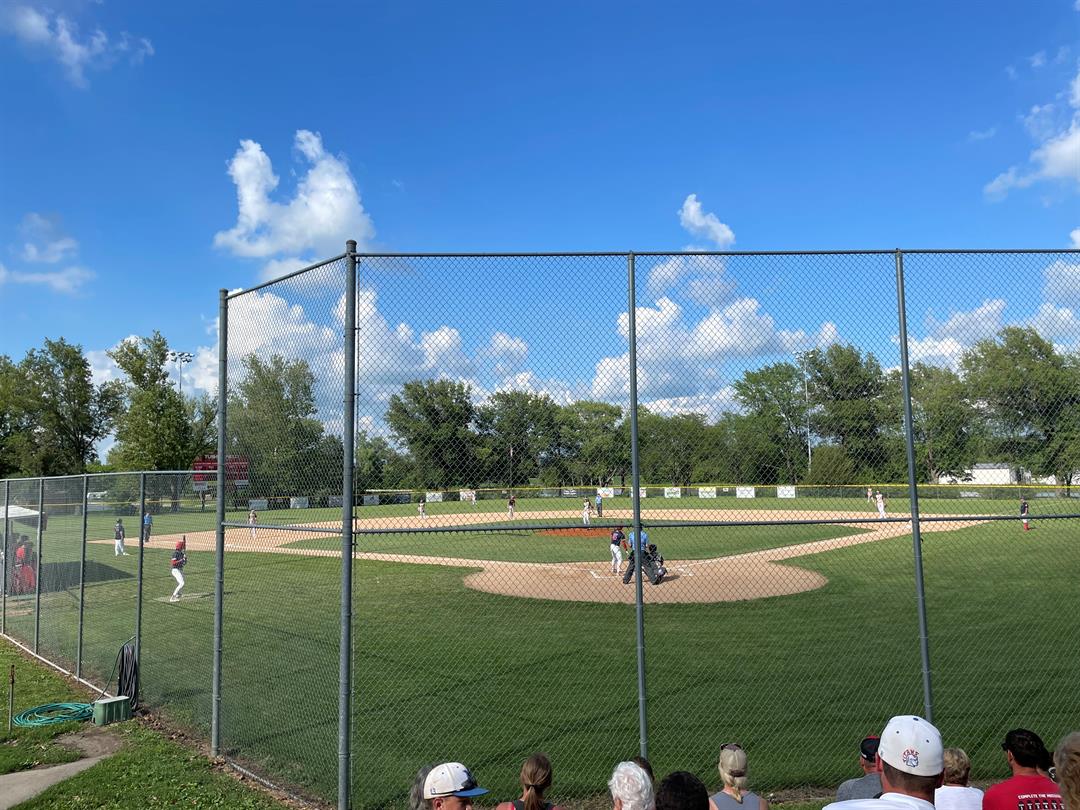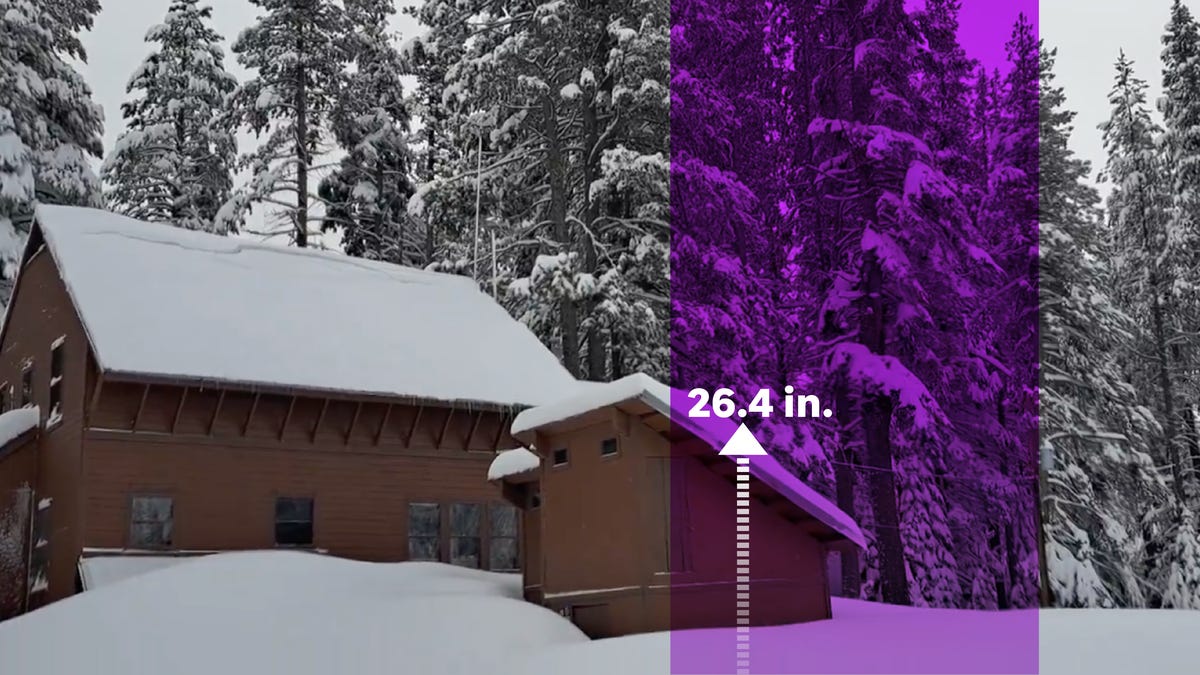Nebraska
Century-old Cass County schoolhouse gets new life in $16M project boosted by historic tax credits • Nebraska Examiner

PLATTSMOUTH, Nebraska — A basketball court was resurrected in this town’s old high school, though the hoop today is more for show than sport and is likely to become the backdrop for a trendy coffee bar.
Chalkboards remain in what once were the chemistry and math rooms, now apartments. Look-alike book lockers line the main hallway, along with a vintage trophy case stuffed with Plattsmouth Blue Devils athletic relics.
With a boost from public incentives, including state historic tax credits, the former Plattsmouth High School built more than a century ago is now fully transformed into an apartment building that has been brimming since March with residents.
On Thursday, History Nebraska’s historic preservation office welcomed local, state and federal officials to a “Rehab Roadshow” that celebrated the nearly $16 million project. In addition to the 25 units in the rehabbed schoolhouse, which were responsible for the bulk of the cost, the price tag includes a 15-unit, newly constructed apartment structure nearby.
The event was intended to highlight economic development tools that are available — and at least one that is at risk — to restore and reuse Nebraska landmarks.
Heart of the community
To the group of about two dozen, Plattsmouth Mayor Paul Lambert spoke about how important rescuing the 106-year-old school, now called the Lofts on Main, was to the small community of about 6,500.
The project not only fires up nostalgia, he said, but also adds workforce housing vital to new employers that have moved to the area in recent years.
“This building is in the heart of the community,” Lambert said, noting emotional ties to many, including his wife and siblings. “If I had torn this down, I would have had to leave home.”

He said the structure was falling apart after sitting vacant for numerous years. Another school facility had replaced it back in 1976, he said, and the property was used only off and on after that for a couple of decades.
It was at the point of demolition, Lambert said, when the RMDX development team came forward.

He said the city agreed to contribute about $1 million over a 10-year period in local incentives that typically go to encourage business development, not residential.
Filling gaps
RMDX’s Ryan Durant and Michael Sothan, historic tax credit coordinator at History Nebraska, said federal and state historic tax credit programs as well as a state tax abatement program and low-income housing tax credits filled financial gaps and made the project feasible.
But, said Sothan, the state historic tax credit program created in 2015 to incentivize the rehab and reuse of historic structures faces challenges.
The Nebraska Legislature, when reauthorizing the program last year, set the program’s annual allowable credits to offset tax liability at $2 million. It was once $15 million a year, said Sothan.
The good news, he said, is that the program has a reserve built up of about $55 million.
“It could be wiped out in one year, three years, it certainly won’t last more than five years,” Sothan said.
He said that without a change in legislation, the program in the long run would not be able to sustain the current demand for credits.
“It creates some uncertainty,” he said. “We do have some time.”
Sothan said the Legislature last year took positive steps in other aspects, including lifting the state income tax credit ceiling for a qualified rehab project from $1 million per project to $2 million.
Things you wouldn’t build today
The Rehab Roadshow, he said, is intended to encourage continuation of restoration projects boosted by state historic tax credits. Among the guests at the Lofts on Main event was Elmwood State Sen. Rob Clements, chair of the Legislature’s Appropriations Committee.

History Nebraska plans to take its roadshow this year to Norfolk and Red Cloud, where it will feature restoration projects in those towns.
Participation in the historic tax credit program requires developers to preserve character-defining features — which was not easy with the decaying structure, said Abby Hegemann of Alley Poyner Macchietto Architecture.
“It was a challenge,” she said, during a tour that highlighted restored features such as the lower floor basketball court, student locker rooms, a boiler room-turned apartment.
Each dwelling is unique, said Durant, and has a distinct personality. But pictures, tin ceilings and other decor tie together to provide the schoolhouse feel.
“There are some really neat things you wouldn’t build today,” he said. “It’s fun.”
 In the backyard of the Lofts at Main are flower beds and a seating area for apartment-dwellers. (Cindy Gonzalez/Nebraska Examiner)
In the backyard of the Lofts at Main are flower beds and a seating area for apartment-dwellers. (Cindy Gonzalez/Nebraska Examiner)
GET THE MORNING HEADLINES DELIVERED TO YOUR INBOX

Nebraska
USDA approves Nebraska DHHS plan for Summer EBT food program

OMAHA, Neb. (WOWT) – The U.S. Department of Agriculture approved on Monday the Nebraska Department of Health and Human Services’ plan to run the Summer Electronic Benefit Transfer, or EBT, program.
An estimated 175,000 eligible students or 80,000 households will receive $120 per child for the summer months to ensure they receive the food and services they need when school is not in session.
“These programs are crucial for making sure that kids in our state receive nutritious, consistent meals during the months they’re not in school,” said DHHS CEO Dr. Steve Corsi. “Our children are our future, and we need to make sure they’re taken care of.”
In addition to the cards that will be issued to families, the program will also offer information on the types of nutritious foods parents may purchase with the EBT funds for their children. DHHS will also send text messages and will follow up with families to assess their needs.
In addition to the Summer EBT program, the Summer Food Service Program through the Nebraska Department of Education will provide free meals to children between ages one and 18 at nearly 300 locations across the state. Recipients need not apply or provide paperwork. Most sites will begin providing those meals the first week of June. Families can text “FOOD” or “COMIDA” to 304304 for information on local sites.
School-aged, income-eligible children may receive Summer EBT benefits via these criteria: participation in the SNAP, Aid to Dependent Children, or Food Distribution Program on Indian Reservations programs; and children on Medicaid with a household income under 185% of the Federal Poverty Level.
School-aged children eligible for free or reduced-price meals through the National School Lunch/Breakfast Programs may also receive benefits if they are involved in head start programs, are homeless, in the foster care system, a migrant, or a runaway.
School-aged children already approved for free or reduced-price meals through filing a school meals application are accepted, as well as those enrolled in a school participating in the NSLP/SBP that are not already eligible but are determined income-eligible through a Summer EBT application. Those will be available come June 1.
If a child meets the first three aforementioned points, they need not complete an application. Their benefits will be issued to a card and mailed to the address on record. Once activated, those EBT cards can be used like any other at approved SNAP retailers to purchase eligible food.
Homeschooled children not receiving public assistance benefits do not qualify for Summer EBT benefits.
Copyright 2024 WOWT. All rights reserved.
Nebraska
Severe storms likely by Monday afternoon and evening in Nebraska

More severe storms are expected across Nebraska by Monday afternoon and evening, threatening hail, damaging wind and tornadoes. Be sure to have a plan in place and several ways to receive weather alerts heading into the second half of the day today.
The Storm Prediction Center has southeast Nebraska in an Enhanced (Level 3 of 5) risk for storms increasing in intensity toward the evening hours in this area.
The severe weather threat increases from west to east because of storms first developing in western Nebraska.
As for the tornado risk, the better chance for tornadoes will be south of Lincoln in southeast Nebraska. That being said, isolated spin-ups will be possible throughout the duration of this event.

Hail will be especially possible in the area shaded in red, while the area with hash marks indicates the potential for significant hail (up to 2″ or higher).

The damaging wind threat increases just east of the hail threat, where we’ll be watching for winds in excess of 75 mph – which can be quite damaging in their own regard.

Isolated showers and storms will start in weaker fashion in southwest Nebraska by the late morning hours on Monday. As these storms try to remain isolated in nature, all severe hazards will remain possible. Storms are expected to intensify and grow into a line across southern Nebraska – that’ll be when the damaging wind threat increases – still watching for hail and tornadoes, too.
Southeast Nebraska will see these storms move in by Monday evening, after about 4 p.m. The line of storms will be quick to move in and out, clearing the state line to the east by 11 p.m. tonight.
The rest of the week will be smoother sailing as the severe weather diminishes with stronger storms carrying through the eastern half of the country in the days to come.

And beyond that, Mother’s Day weekend looks to be shaping out well in the weather department.
Meteorologist Jessica Blum
Twitter: JessicaBlumWx
Facebook: JessicaBlumWx
YouTube: JessicaBlumWx
Nebraska
Nebraska Tornadoes: FEMA starts canvassing hardest hit areas

ELKHORN, Neb. (WOWT) – There’s no shortage of damage, debris, or uncertainty in the Elkhorn neighborhood of Ramblewood.
“All of us homeowners are like where to start, what can I get, who can help me?” said Zoe Sorando.
From the sidewalk, Sorando’s home may look like it’s all there, but the inside maps a much more challenging path for her and her family. She’s had inspectors, engineers, and electricians come and go.
“They are trying to help, but having a lot of people you don’t understand what they are doing, it is overwhelming,” she said.
Thankfully, she says, these two women with FEMA took the time to help her understand their purpose.
“For them coming house to house and offering the services, it is like very helpful,” said Sorando.
FEMA teams are speaking with homeowners and renters, encouraging them to apply with them or online. The federal agency often provides money for needs not covered by insurance, like home repairs or paying for a place to live.
“We’re working with every household on a case-by-case basis,” said John Mills, a FEMA spokesperson. “We want to hear from people about what their needs are and make you eligible for as much as we possibly can.”
They’re also leaving flyers. For Sorando, this response helps calm the chaos she’s experiencing now: “I’m looking forward to follow up and see what else they can do for me.”
She made it through 2017′s deadly hurricane while living in Puerto Rico. Now she can add 2024′s tornado outbreak to this list.
“I was a survivor of Hurricane Maria in Puerto Rico. And FEMA is not…I mean they’re not out there like this,” said Sorando.
With FEMA’s arrival, it warns residents about potential fraud. They said “FEMA employees do not ask for money – or accept money – from disaster survivors. FEMA staff never charge applicants for disaster assistance, inspections or help with registration.”
Copyright 2024 WOWT. All rights reserved.
-

 News1 week ago
News1 week agoBoth sides prepare as Florida's six-week abortion ban is set to take effect Wednesday
-

 Politics1 week ago
Politics1 week agoColumbia University’s policy-making senate votes for resolution calling to investigate school’s leadership
-

 Politics1 week ago
Politics1 week agoGOP Rep. Bill Posey won't seek re-election, endorses former Florida Senate President as replacement
-

 World1 week ago
World1 week agoBrussels, my love? MEPs check out of Strasbourg after 5 eventful years
-

 World1 week ago
World1 week agoRussian forces gained partial control of Donetsk's Ocheretyne town
-

 Politics1 week ago
Politics1 week agoHouse Republicans brace for spring legislative sprint with one less GOP vote
-

 World1 week ago
World1 week agoAt least four dead in US after dozens of tornadoes rip through Oklahoma
-

 Politics1 week ago
Politics1 week agoAnti-Trump DA's no-show at debate leaves challenger facing off against empty podium

/cloudfront-us-east-1.images.arcpublishing.com/gray/SW5MAM5FJJETVLFG6CWGJJPNPM.jpg)
















